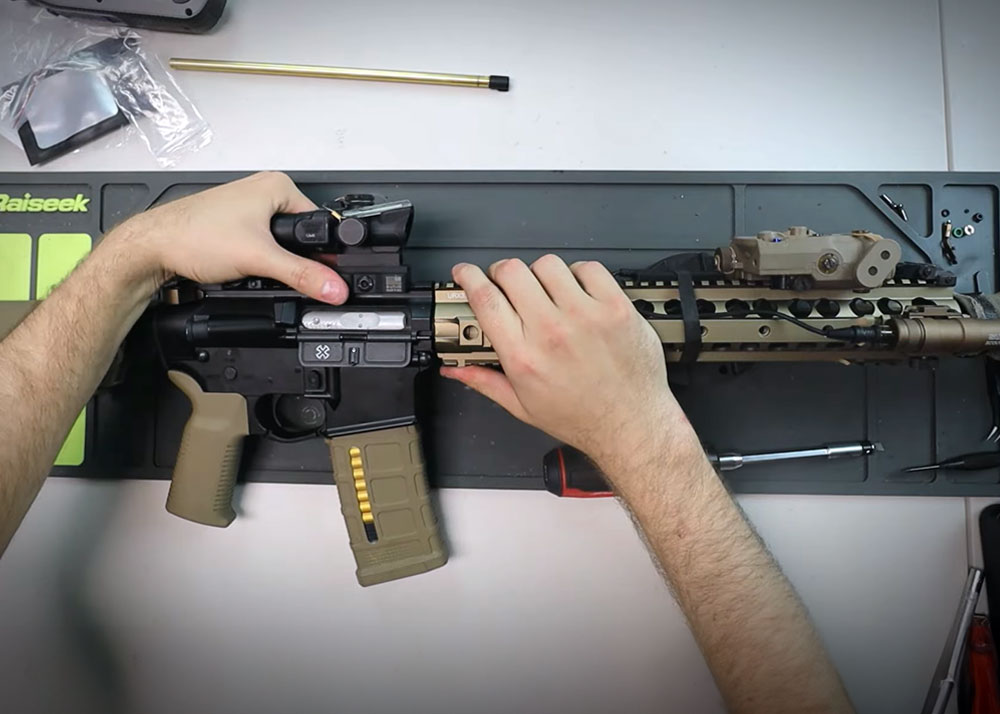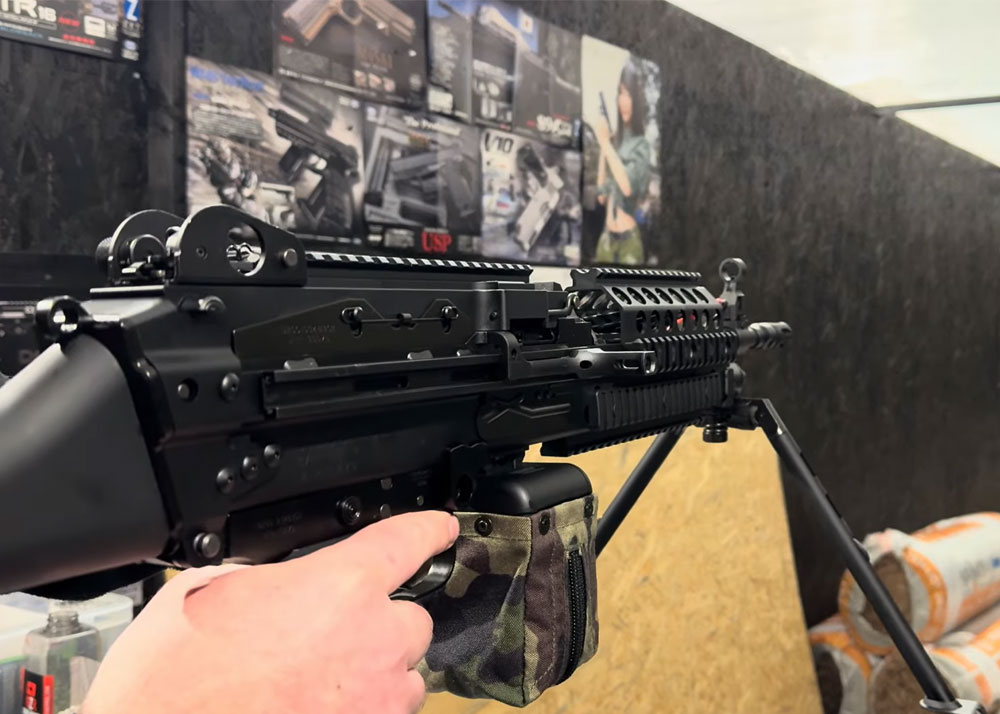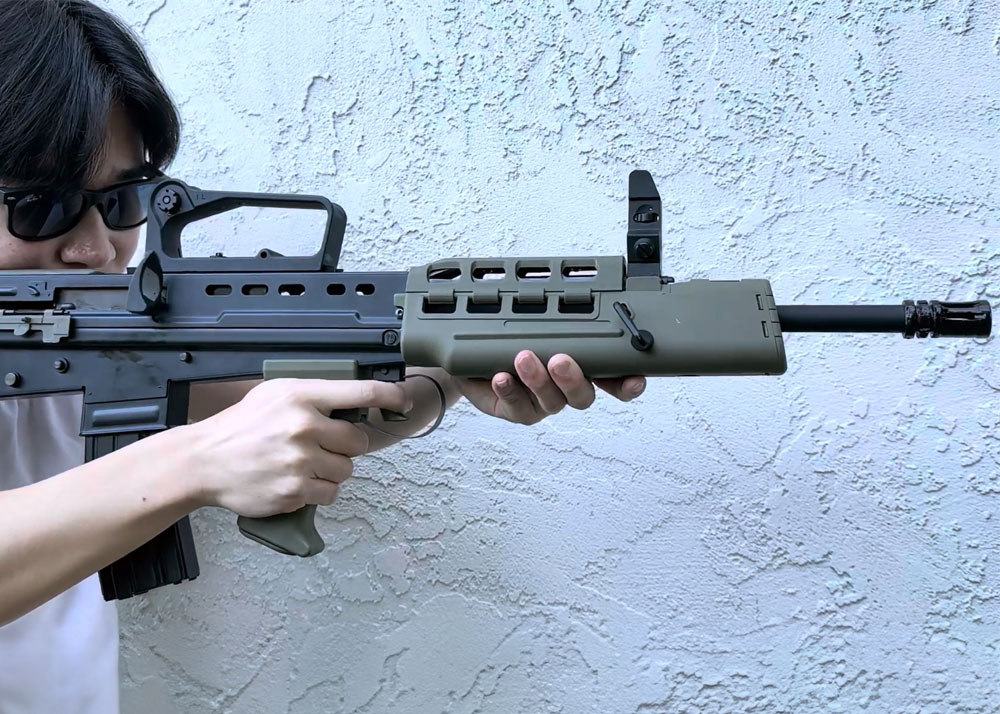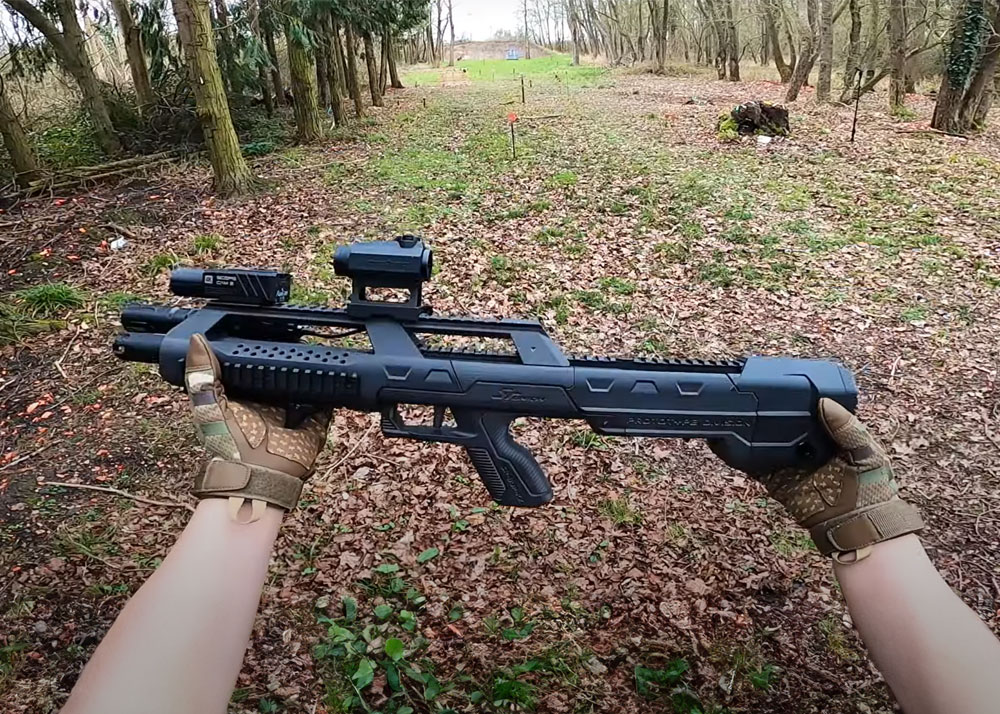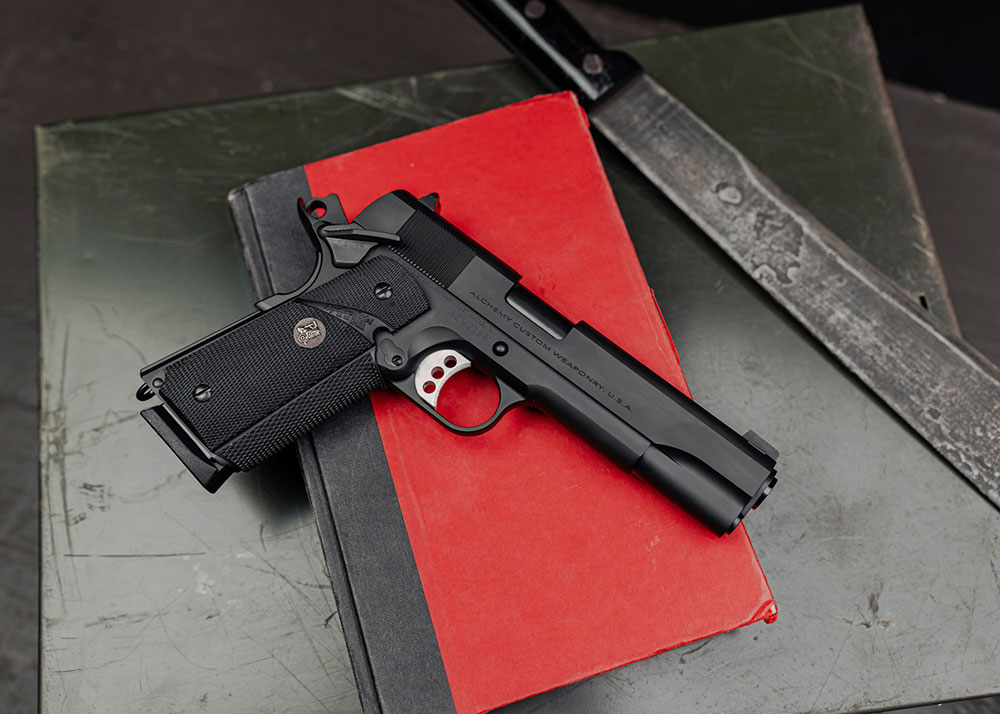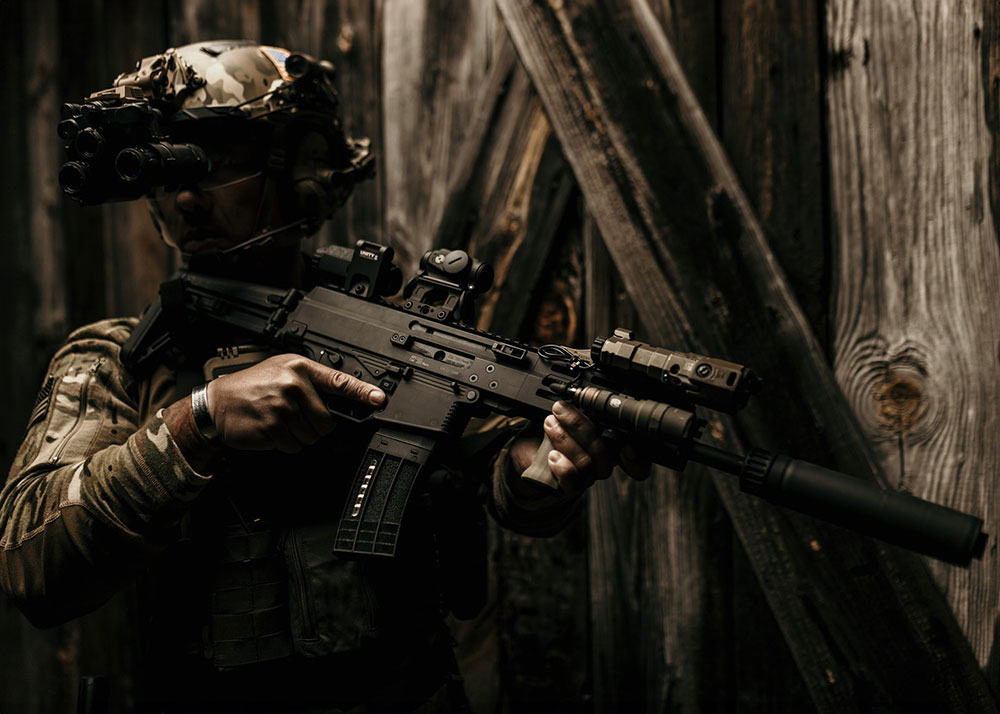Beretta RX4 Storm by JLS
MadDog
16 Jul 2009
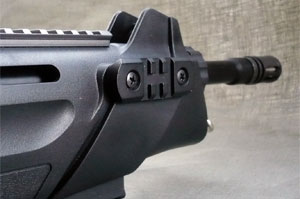
In a sea of M4s, MP5s and AKs---it is refreshing to see new types of AEGs in the field. JLS is one of the Chinese airsoft manufacturers that bring new models of AEGs in the market. They may not be as prolific as Jing Gong (JG or Golden Bow) or Dboys, but one thing that makes JLS stand out from the rest is their originality. Most ACM brag about being full Tokyo Marui (TM) clone, but this RX4, ladies and gents is NO CLONE.
With no previous model to base it from, the Chinese built this from the ground up! That in itself is impressive. Last year, JLS surprised the airsoft world by producing the first ever SCAR-L. Sadly, the excitement was dimmed by quality control issues. A few months later they came up with another original—the FN2000.
Bullpup fans showed a good amount of satisfaction for the JLS FN2000. But being the one and only FN2000 model around, there's just no competition. It seems like building original AEGs is the JLS marketing strategy—hence when they came up with the RX4 (E-04) I wasn't that surprised anymore. I however must admit that it stirred butterflies in my gut—everyday wanting to get-a-hold of it...
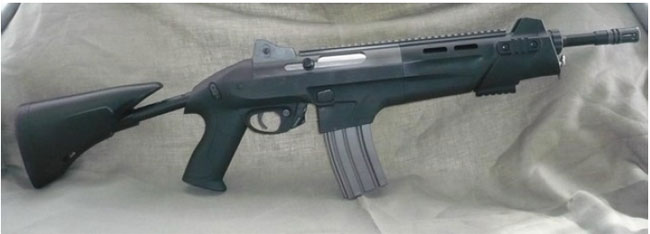
Exciting is the word. I always welcome a carbine that is NOT an M4. This rifle will definitely earn second looks from other enthusiasts, because it is new, it is original.... and because it's not an M4, an MP5 or an AK.
Before I go on talking about this newest airsoft bad boy, a bit of real steel info first. The RX4 Storm is manufactured by Benelli Armi for Beretta. It uses the familiar 5.56mm NATO round and operates only in semi-automatic mode and no selective fire. The RX4 has been primarily intended as a “patrol carbine” for police organizations and private security operators thus, not currently in any military use (info taken from www.wikipedia.com).
Now for the airsoft version
The JLS RX-4 Storm is not yet available in the UK as of this writing, leaving me no other choice but to order it from Hong Kong. I don't know if the seller just decided not to include the full packaging but this particular rifle just came with a styropor packaging to house and protect the rifle enclosed in a plain box, which looks worse than a parcel box. I do know of people who get fussy about packaging. For them the cover or packaging tells a lot about how serious the manufacturers take their products. I don’t really go with that flow. My only concern is that packaging should be able to protect the product so it comes to me intact. The packaging should be able to protect the product and not glamorize it. In this particular scenario, I was really disappointed as my RX-4 came with a loose charging handle and some scratches—it looked like it has been used already. Then I remembered how my team mate complained about his JLS SCAR-L before, that it had a lot of scratches and looked used out of the box—this is some old failures that have not been rectified.
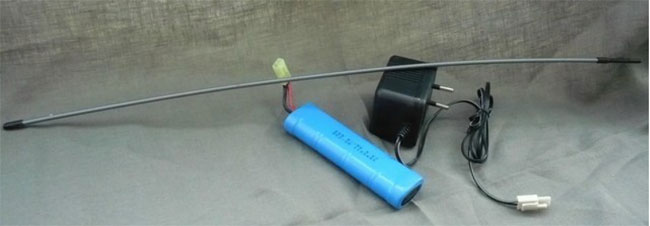
Now, what’s in the box? The really tacky box contains the RX-4, a manual in English, a sheet metal hi-cap magazine, a 9.6v mini battery and a charger. Basic, but to be honest the rifle is the only thing that matters to me.
After a short period of whining and protesting, I took another look at the RX-4. I realized that if I can go past the well-known (and expected) flaw of JLS products, this gun is actually amazing! If you haven’t seen an RX-4 before you might think that this is an end product of an unrestrained indulgence between an M4, an M14 EBR and a Benelli M4 Super 90. Yes, you can say it is unique.
Now let’s look at the gun in detail, from the front-end to the butt-stock.
THE FRONT END
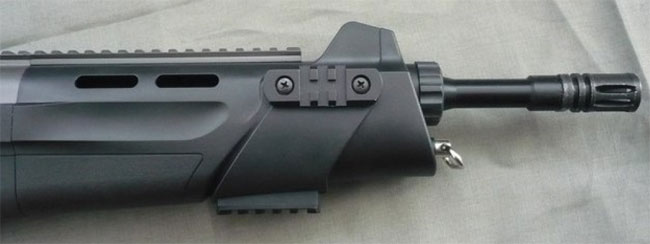
What’s easily recognizable on the front end is the flash hider, which is akin to that of an M4. I, for one like to experiment with flash hiders. In this particular gun I plan to put a big rebar flash hider or a stubby silencer to add up to it’s uniqueness.
The flash hider can be removed by unscrewing it anti-clockwise. With the flash hider off, you can see the inner barrel.
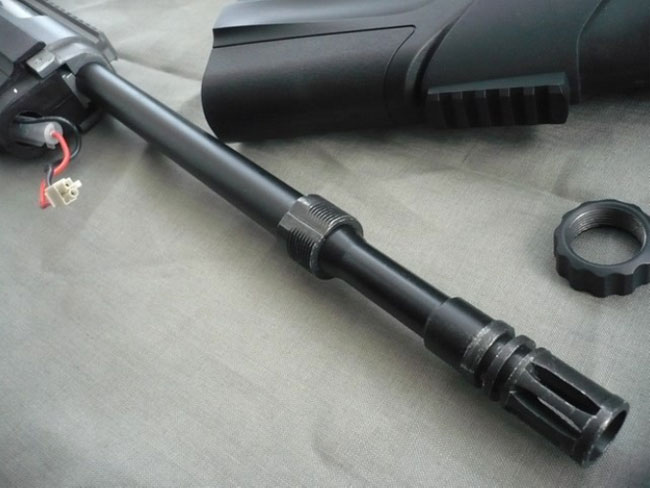
By my estimate, the internal diameter of the inner barrel is around 6.04mm which may improve accuracy. The brass inner barrel is housed in a 21cm long solid external barrel. Going further back, you will find a metal threaded ring that looks like a small “delta ring” that screws on clockwise to secure the hand guard.
The hand guard can be removed by unscrewing and removing the “delta ring”. It is made mostly of dense ABS plastic. At the top, a metal RIS is attached. There are two short metal rails on both sides and a short plastic rail at the bottom. The front part of the hand guard is metal and it secures the external barrel via the “delta ring”. There is no noticeable wobble at all. The sling attachment is made of a shiny chrome plated metal which I just find despicable! My team mate even joked that if it breaks I need not worry for spare parts as the strap attachment from my cheap luggage can be used as a replacement. The general feel of the hand guard is bulky with a fine sandy surface. The hand guard accommodates a 9.6V mini battery pack, but there’s still plenty more space to possibly accommodate a 12V pack.
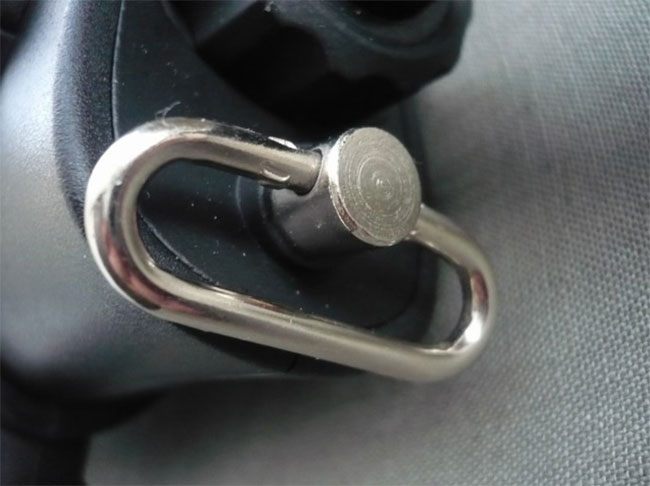
Ok, more bad news. The front sight… oh, what a disappointment. It is made of lightweight metal that adjusts up by turning it counter clockwise and down by turning it clockwise. I would describe it as a screw that is shaped like a front site. It is not secured by any other means and unless you glue it in place you will have the risk of it falling off due to vibration.
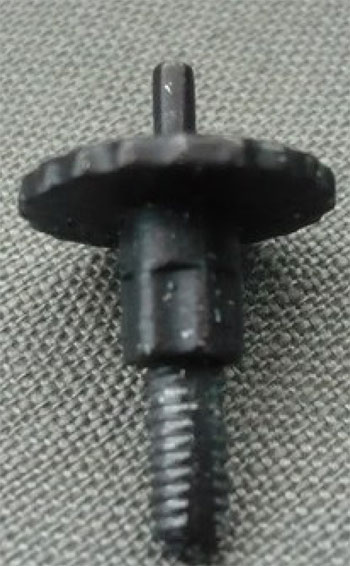
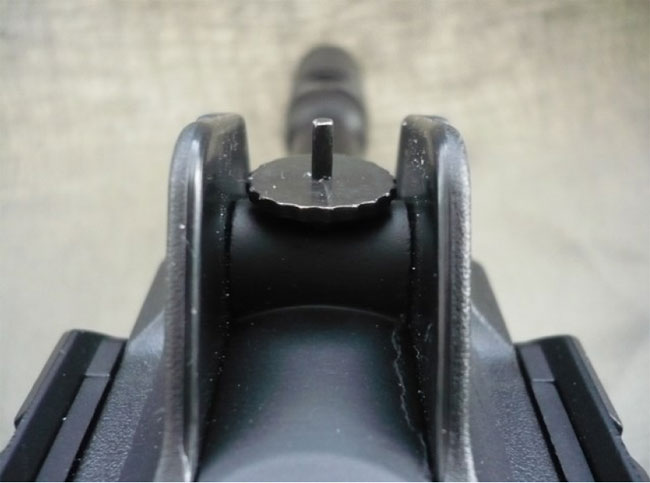
All the components of the front end even though it’s mostly plastic make the RX-4 front heavy. You really have to think twice about modding the hand guard to accommodate large batteries as you may end up complaining about how heavy this rifle is. The one thing that I really like about the front end is that there is no wobble at all. None of that annoying sensation that the front end will fall off any second so you can concentrate on your assault.
THE BELLY OF THE BEAST
The second half of the metal RIS continues on top of the metal upper receiver. There is no notable unevenness from the front and back RIS. The rear sight comes immediately after the RIS. Like the front sight, the rear sight is unimpressive, with no elevation and windage adjustments, you are left with just two options, a short and long range choices. This is done by flipping the rear sight. Yeah, boring... Pulling the charging handle back will expose the hop up dial. The charging handle is rather flimsy and could get loose even with the mechbox’s vibration—look out for this as you might lose your charging handle in the midst of battle.
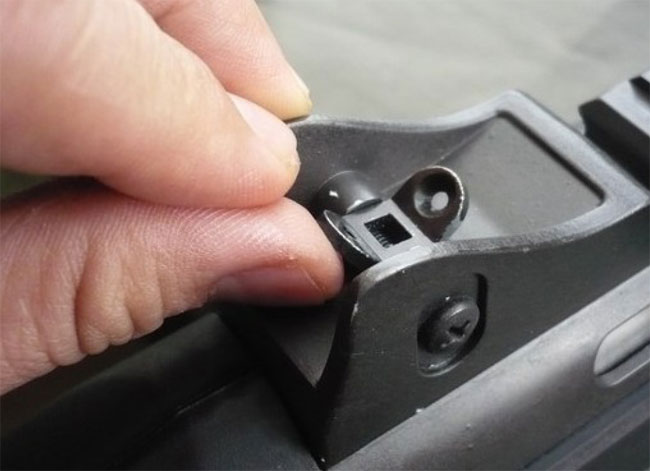
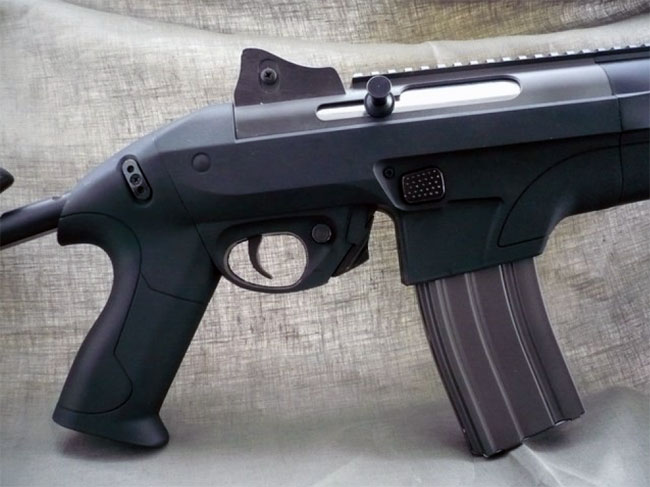
The lower receiver is plastic and bulky too, to match the front end. It narrows slightly towards the mag well. The supplied magazine has a snug fit in the mag well. A big mag release button is found on the left side of the lower receiver. The grip is made of ABS plastic and is wide and chubby and has a fine sandy texture. It is angled same as most M4s and MP5s making it comfortable to hold especially in prolonged aiming stances.
The trigger is metal, pull is moderate and very reactive. The JLS RX-4’s fire selector and the safety switch are incorporated in the plastic trigger guard. For full auto you have to push the switch upwards and the reverse for semi-auto.
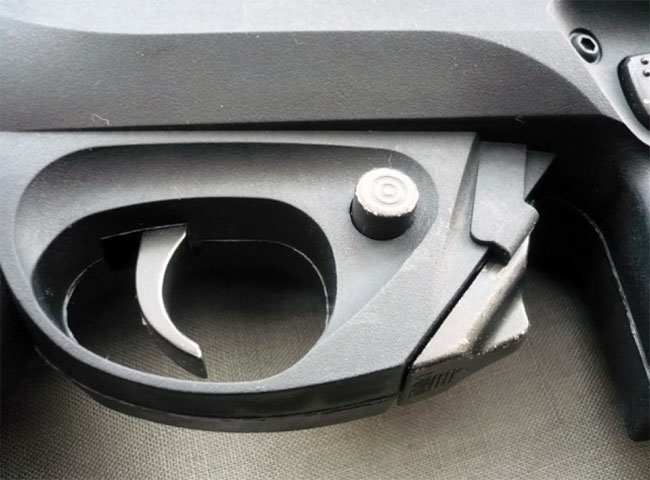
THE REAR END
The rear end is composed of the plastic butt stock sliding forward and backward in 3 positions on a metal tube that is angled downwards. To adjust the length of the butt stock, the operator just needs to push the button on the left side of the butt stock. When not fully retracted, I find it a little bit awkward to use the manual sights. The bulky dimensions and fine sandy texture of the front and middle part of this rifle continues up to the rear end giving the impression of durability.
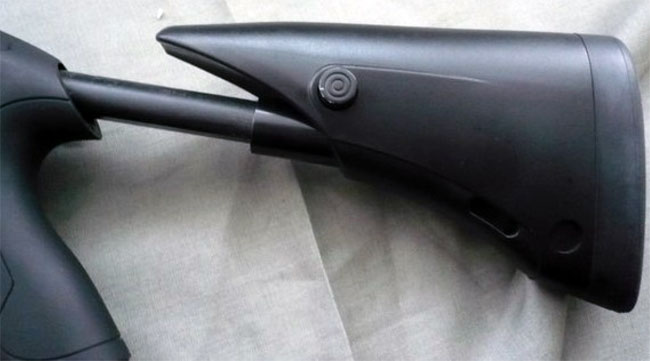
OPERATING THE JLS RX4 STORM
With a fully charged battery pack installed, a fully loaded and wound up magazine in the mag well, safety button disengaged I then fired the RX4. Here’s what I observed:
As the fire selector is located in the front part of the trigger guard it would be convenient for the operator to switch from full to semi auto mode... if the operator has got a REALLY long index finger. The magazine that came with this AEG is made of sheet metal and is basically an M4 mag. It fits snugly in the mag well and with little or no misfeeding noted. At 15 meters, this rifle is very accurate producing mostly alpha hits. I must say I used an optical sight, meticulously zeroed to achieve that result. I guess I am totally turned off by its stock manual sight and wouldn’t really bother to use it. The acoustics can be described as moderate. Not too loud and not too quiet. There are no notable grinding noises or anything that would suggest obstruction or untoward resistance in its internals. The mechbox cycles well in full or semi auto modes. However, I noticed an unusual smell of grease as I fired the first 300 rounds. I suspect the mechbox had been over greased—a phenomenon quite typical of ACM AEGs. The rate of fire powered by the stock 9.6V mini battery yields an acceptable 800rpm to 900rpm. That can easily be tweaked by a higher power source or by installing high speed gears. The muzzle velocity is a bit on the scary side. At 380 fps this beast is too HOT to be used in UK sites. With only +/- 2 fps variation in ten shots, I can only assume that the mechbox is well tuned—it’s almost a shame to downgrade it. Now where is that velocity reducer?



